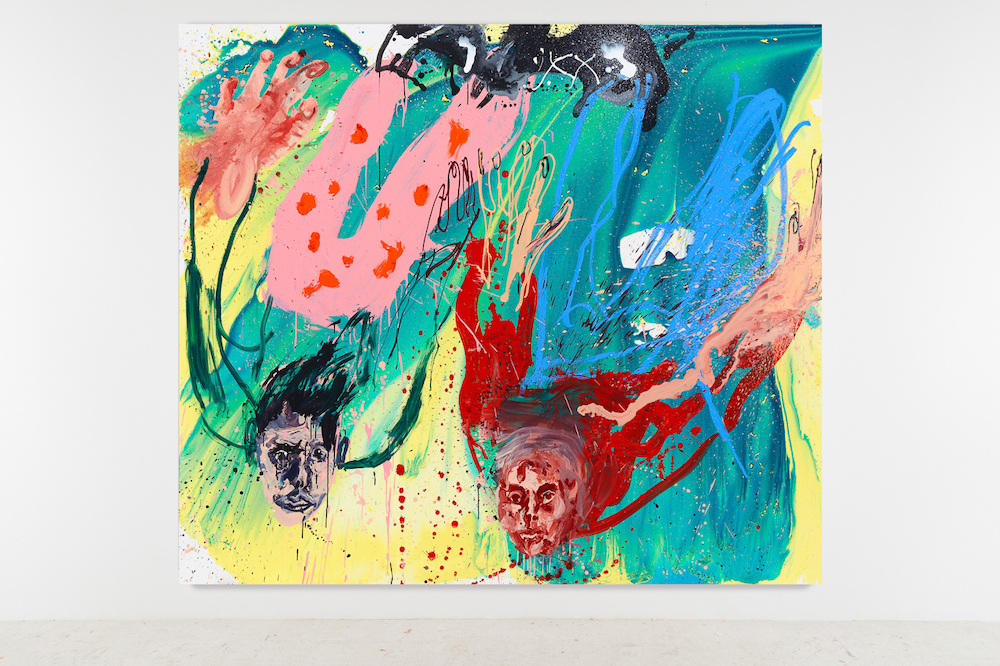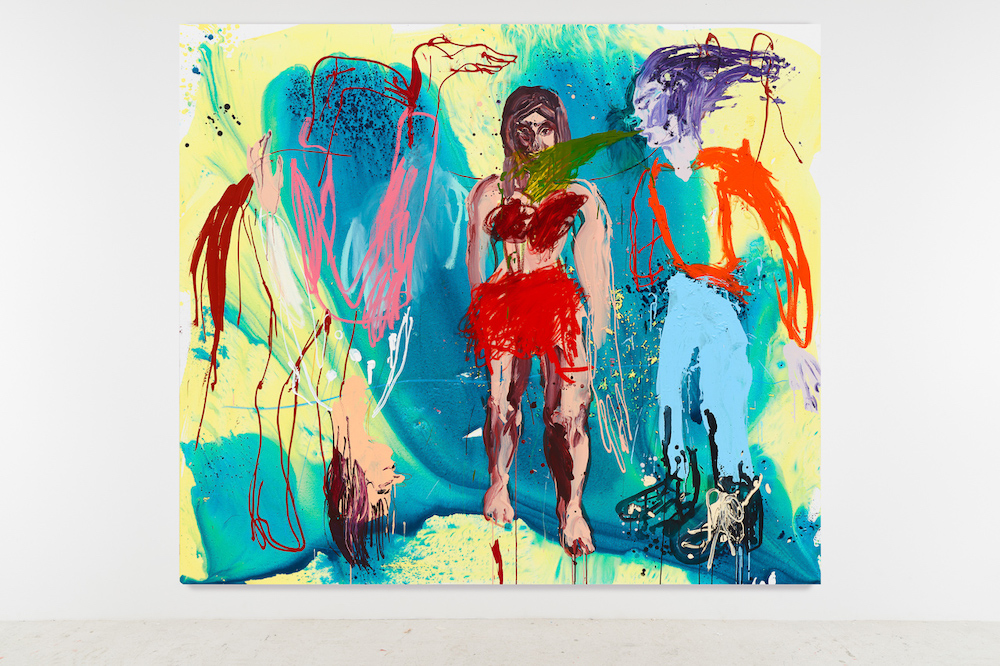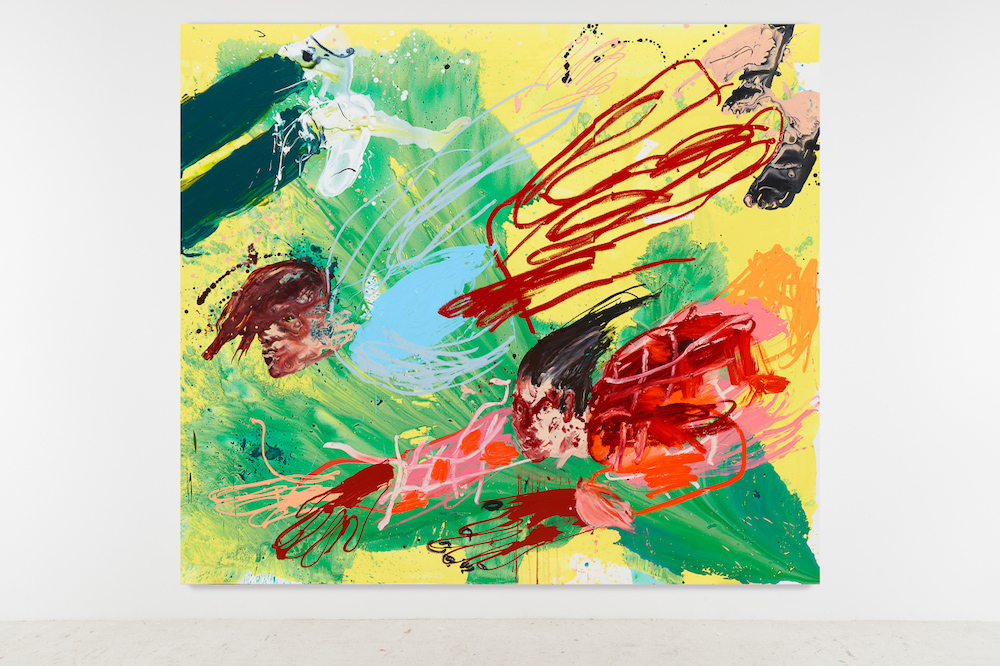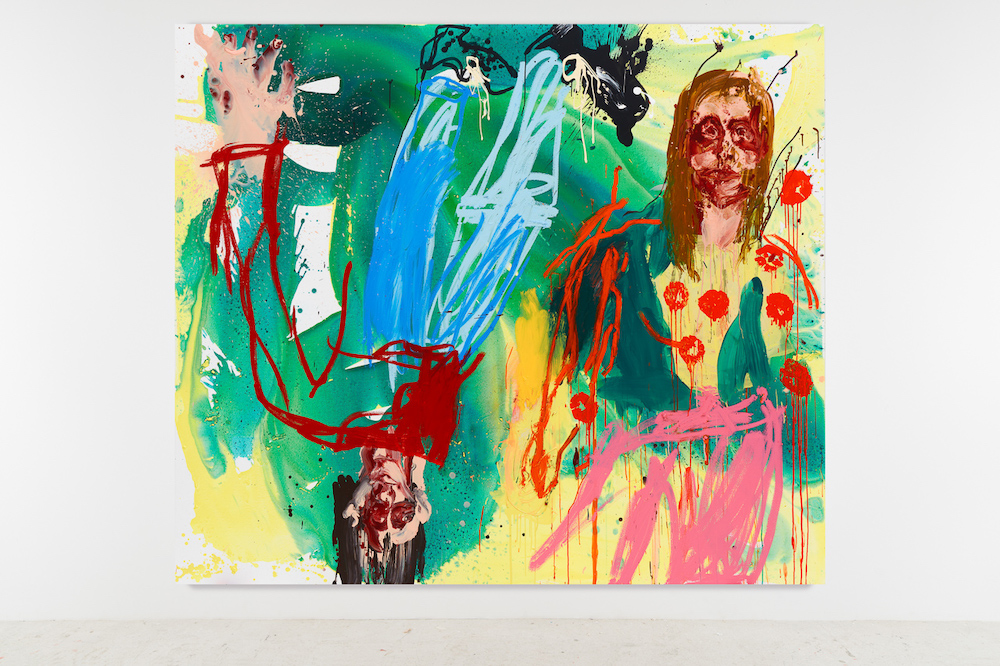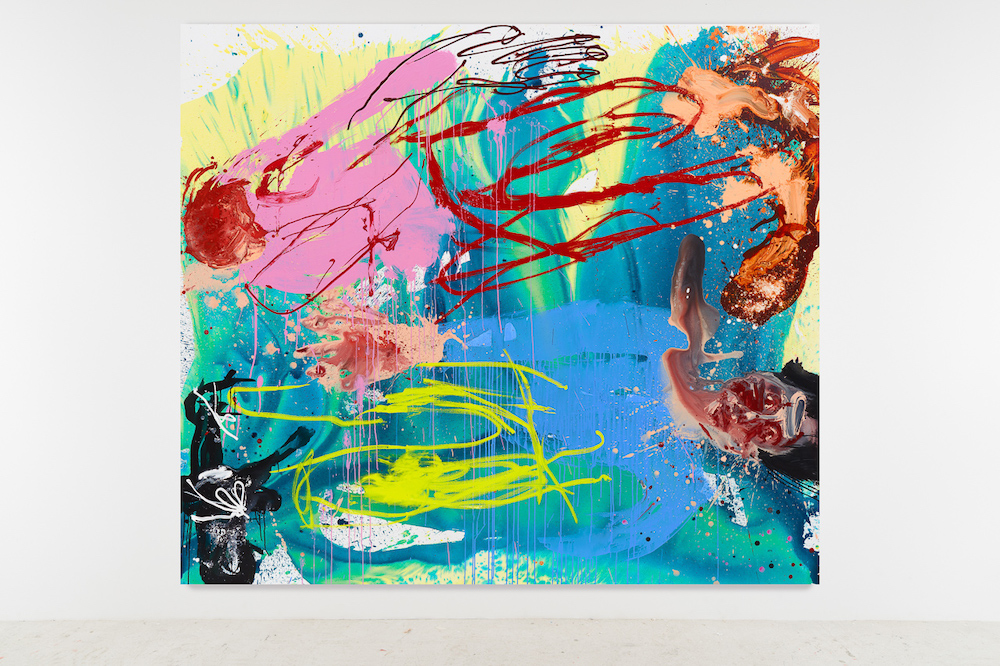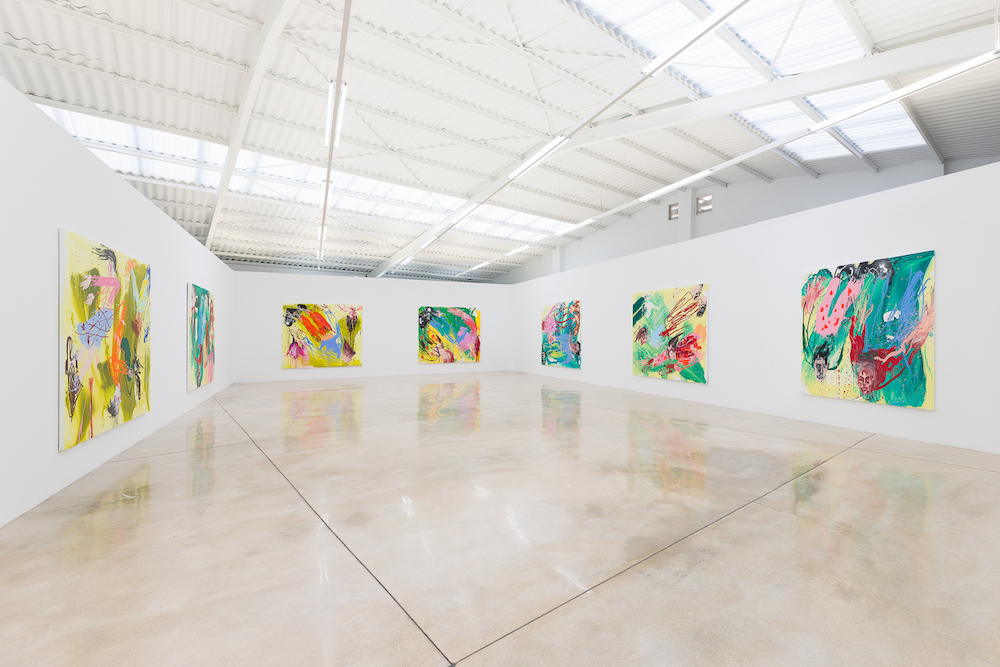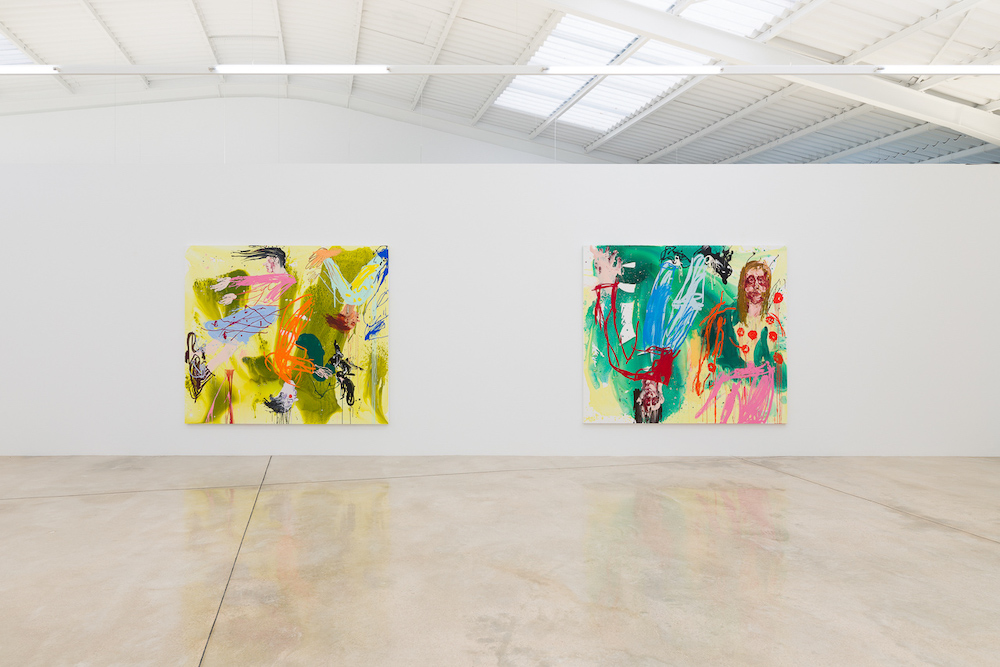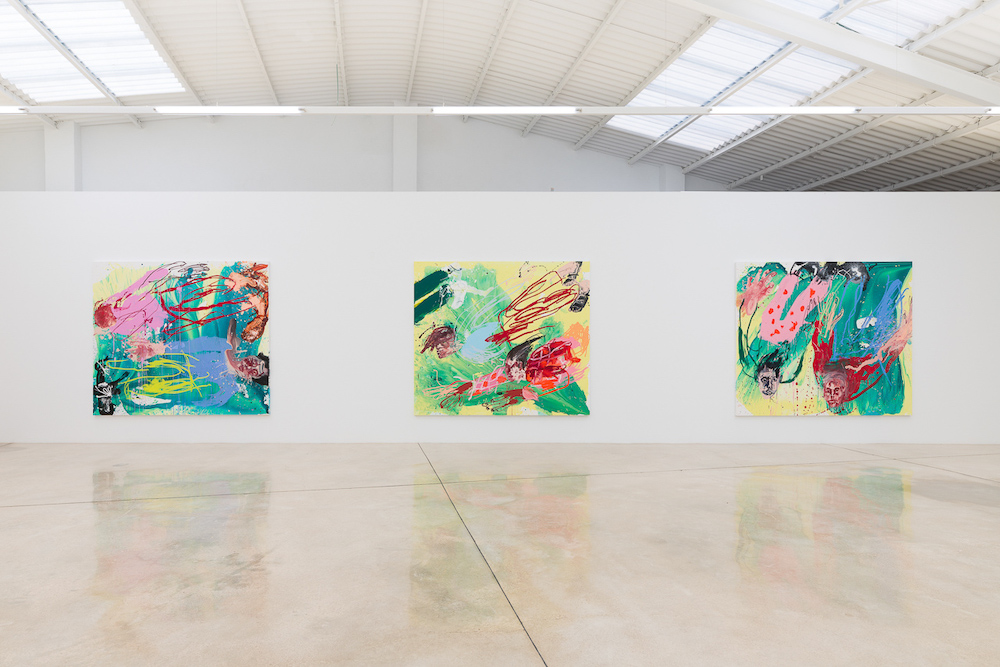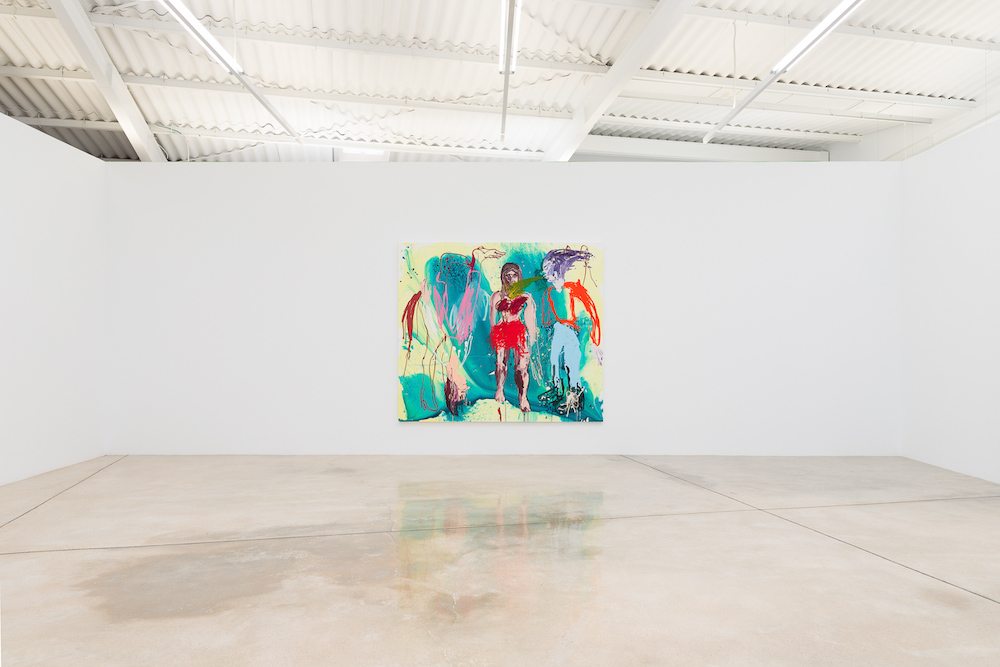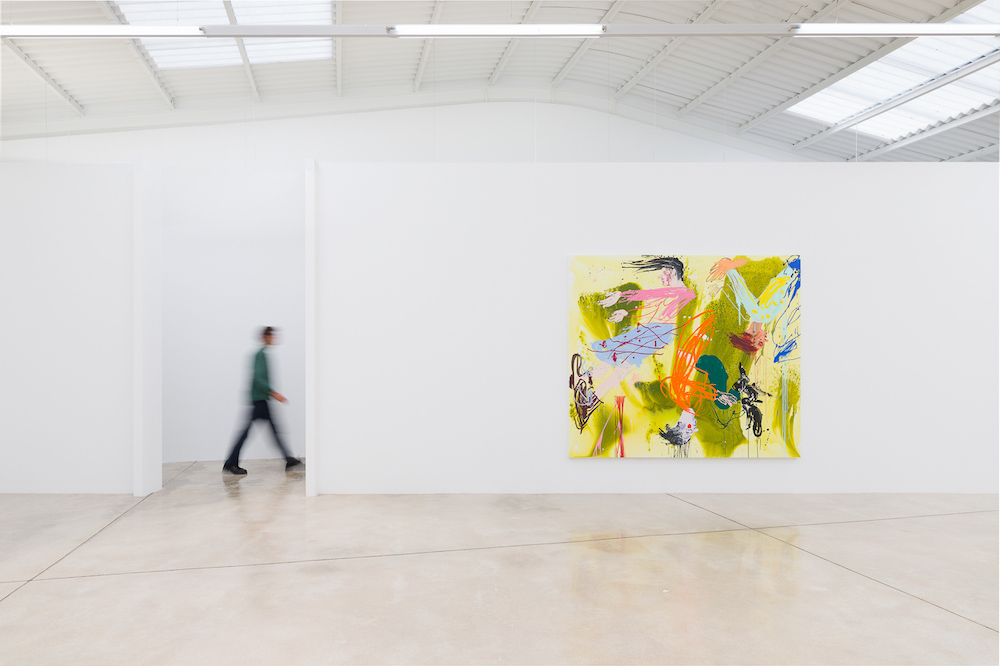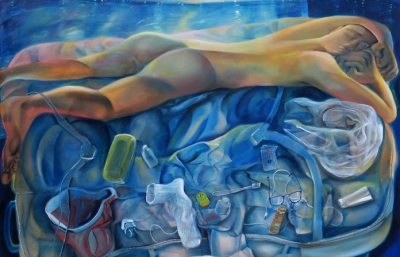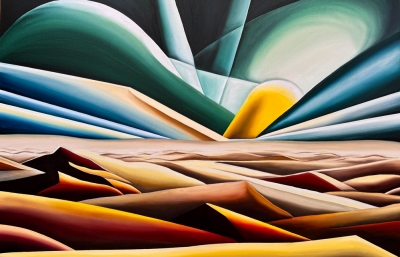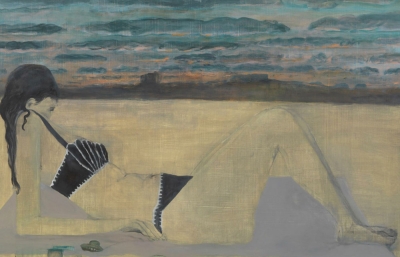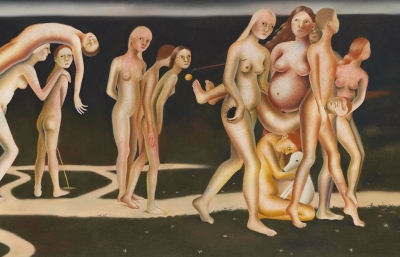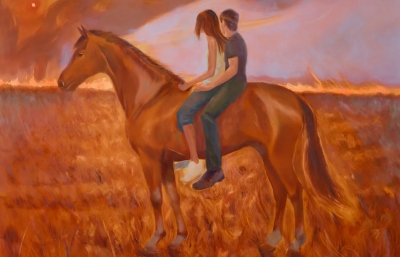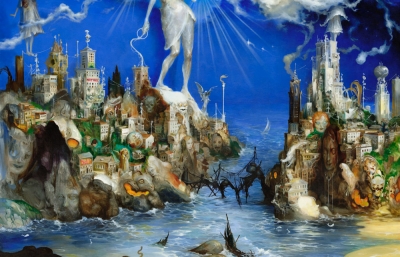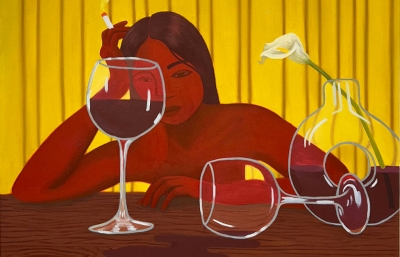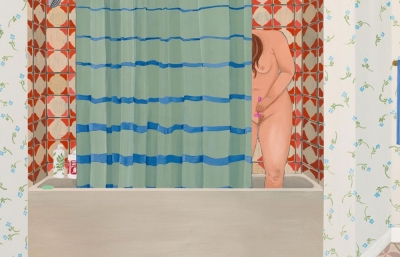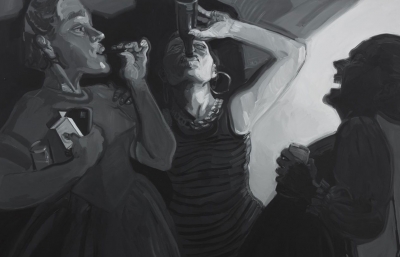Cristina de Miguel’s first exhibition in the larger room of L21 Gallery presents us with a series of paintings suspended in the air. I’m not referring to the installation of her canvases nor to the figures we find there, rather my statement is textual: it is the painting itself that floats, carrying with it the spectator who knows how to fly. Although, a dedicated apprentice of flight will also be able to reach it and enjoy it.
Flying is a question of weight, a lot of technique, but above all it is related to the intensity of desire. Sometimes it is enough to wave your hands quickly as if you had wings to get off the ground; it is a question of trusting and giving your all. Cristina de Miguel knows this. Her painting harmonises the gesture, fast and loose, with just the right amount of colour and an infinity of resources so as not to let us fall, so that the emotion remains on the canvas like a kind of spell and the composition traps and holds us while we walk through its fiction; there, where we discover ourselves lighter, more alive.
Despite the insistent sensation of floating, the title of this project might lead one to think: it is others who precipitate. Be that as it may, I suspect that those who are falling from the sky will soon find a tailor-made parachute in these canvases. To stay in the air, trusting their instinct, finally catching their desire.
I purposely confuse water and air, where one floats and where one flies (or more modestly, one jumps) because the background colours of the canvases in this exhibition, – green, yellow and blue -, are painted very watery, but it is in the air that the falling figures are to be found. Some stare at us while others close their eyes. The latter, probably to continue dreaming. The former, to invite us to jump with them.
A kilo of green is greener than half a kilo; it was a secret Gauguin shared with a young painter. Cristina turned her attention to Katherine Bradford or Joyce Pensato to immediately move towards her personal place, an elevated space where heaviness is suspended in favour of lightness. The dynamism of her canvases runs at a devilish speed, endless lines and drops, and a colour that welcomes us voluptuously, like a longed-for mattress after a long night.
In the acrobatic leap that defies the laws of gravity, that is where Cristina de Miguel makes these paintings. Disentangling the figures from the background, separating them from their weight, letting them fall freely and discover that, in reality, they already know how to fly. The air becomes thick, dense and salty like sea water. It mixes with the paint, the body and the colour finally go hand in hand, the fingers between the hair, the pigment adheres to the canvas. Everything is a movement. In fact, a dance.
On the importance of knowing how to fly or how to separate oneself from the earth: I think of Oliverio Girondo’s poem Espantapájaros (Scarecrow) and its categorical: I do not forgive them, under any pretext, that they do not know how to fly. And I continue to be moved each time by Dylan Thomas’ poem that ends, without ever fading: The ball I threw while playing in the park / has not yet reached the ground.
Suddenly, looking at the jpg’s I have on the screen, I’m not so sure if I’m seeing them right or upside down, if they’ve turned around when I closed my eyes. And yet, this getting lost is evidence that I am suspended in the painting, like an astronaut in space.
I’m not the only one, all around me, once we enter Cristina de Miguel’s exhibition, there are people flying, or falling from the sky… Paint dripping, colours bursting, bodies passing quickly from one side of the canvas to the other, like punctured balloons or inflatable dolls whose plugs have been removed: they are deflating with abrupt, unpredictable, uncontrollable movements. Not all of them: a few are looking at us confidently, they have already reached their flight license and encourage us to follow them…
The colour floats, the line runs like a braided and endless loop. Finally, we feel the air with our fingertips, and it is a joy. —Francesco Giaveri



